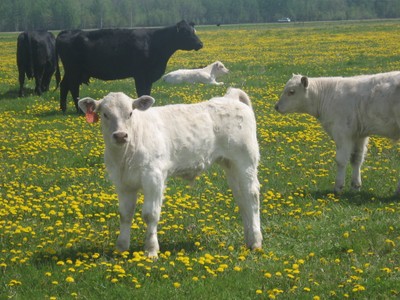What Does the Future Hold? Cattle Breeding Techniques
New breeding techniques continue to progess. Here is a review of the latest techniques and those that may be coming.

As we make progress in the field of animal breeding and selection, many “new” technologies surface. Visual appraisal was complemented with performance records, expected progeny differences, ultrasound evaluation of carcass traits and, in recent times, genetic marker evaluation of economically important traits.
While no single method along the continuum seems very far from the next, when one extreme is compared with the other, the progression of tools is quite remarkable. But what else does the future have in store for our industry?
Several researchers have evaluated a process called male germ cell transplantation. The concept of their work is that transferring cells (specifically spermatogonial stem cells) from the testis of a donor male into the testis of a recipient male could result in the recipient producing the donor male’s sperm. The donor sperm would continue to reproduce in the recipient male, and subsequent breeding of the recipient male to a female would result in calves that are the son or daughter of the donor male.
The steps of the technique include isolating the spermatogonial stem cells from the donor animal, preparing the recipient animal, using ultrasound guidance to transfer donor cells into the testicles of the recipient, allowing the donor cells to proliferate in the recipient, and then mating the recipient to females to produce offspring from the donor.
This technique has been proven on a research level but has experienced several issues:
- Immature bulls have greater concentrations of spermatogonial stem cells compared with mature bulls. This highlights a potential limitation to using mature bulls that are of high accuracy as donors.
- If high-accuracy sires are to be utilized, the harvest of testicular tissue may harm their own reproductive abilities. In this instance,stem cells would be collected and the donor bull may not be capable of producing additional semen. This would be a short-term issue because the goal would be to develop a perpetual semen supply via recipient bulls.
- Recipient bulls either need to be immature or go through chemotherapy to eliminate their own spermatogonial stem cells.Once transferred, semen from both the donor and the recipient will be produced in the recipient. In sheep and goats, only 7 to 10 percent of offspring from recipient male breedings are from the donor male.
These issues and others certainly would need to be overcome for the technique to have large-scale applicability. However, if the technique is optimized and available commercially, the face of cattle breeding could change dramatically:
- Decisions about the type of breeding system implemented would include a cost/benefit analysis among natural service bulls, artificial insemination and recipient bulls producing semen from genetically superior donors.
- Production systems that do not allow gathering of cattle for artificial insemination (limitations in facilities, labor or simply a function of expansive grazing) would be able to have the highest-quality genetics available via recipient bulls.
- Climates that are inhospitable to the point where bos taurus bulls could not survive would be able to raise crossbred calves by using bos indicus recipient bulls carrying bos taurus semen.
Whether the process ever will become mainstream is something we can’t necessarily predict. Transferring embryos from genetically superior donor cows to recipient females is certainly something that was accepted in the cattle industry. However, cost of technology often limits its use. In addition, the term “stem cell” brings in controversy that may make cattlemen shy away from using recipient bulls.
Regardless of the actual future application of the process, just remember this picture: recipient herd sires on your operation carrying semen from virtually any bull in the world. Only the future will tell what happens with our industry, but until then, it doesn’t hurt to imagine the possibilities.
For more detail, see:
Honoramooz and Yang. 2011. Recent advances in application of male
germ cell transplantation in farm animals. Ver. Med. International. Article
657860
Hill and Dobrinski. 2006. Male germ cell transplantation in livestock
Reprod. Fertil. and Devel. 18: 13-18.
- Carl Dahlen, NDSU Extension Beef Cattle Specialist
